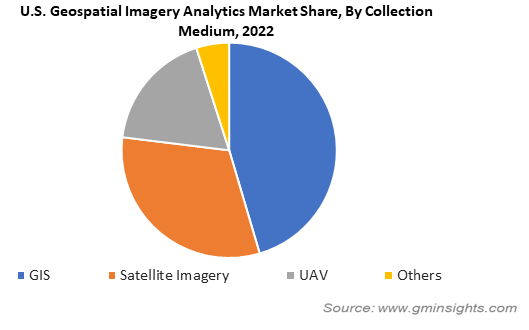Home > Media & Technology > Information Technology > IT Software > Geospatial Imagery Analytics Market
Geospatial Imagery Analytics Market Analysis
- Report ID: GMI2841
- Published Date: Dec 2022
- Report Format: PDF
Geospatial Imagery Analytics Market Analysis
The cloud geospatial imagery analytics industry is poised to attain 20% gains between 2023 and 2032. The rising complexity associated with storing geospatial data is prompting enterprises to switch to cloud-based applications. With the rising popularity of cloud platforms, the requirement of cloud GIS is set to increase. With these solutions organizations do not need to focus on updating their infrastructure at regular intervals, making it more convenient for them to manage and map records on cloud, fueling product demand.
The UAV segment in the industry is slated to observe 25% growth rate through 2032. The strong demand for collecting accurate as well as high-resolution geospatial data is encouraging enterprises to adopt solutions such as UAVs. Drone manufacturers across the world are developing new and high-tech products to cater to the changing needs of defense, mining, agriculture and construction sectors, further speeding up the production of UAVs.
BFSI and other applications in geospatial imagery analytics market is estimated to foresee 15% growth during 2023-2032. These analytics solutions are being extensively used in sectors such as BSFI, as they facilitate safe monetary transaction route analysis and assist banks and financial institutions in managing their ATM networks efficiently. By using advanced maps and spatial analytics solutions, banking institutions can gain deeper insights into their relationships with clients to make informed decisions.

The Europe geospatial imagery analytics market is set to capture around 25% of the revenue share by 2032. Regional governments are introducing a variety of space-related projects and programs, offering financial and infrastructural support to space research organizations for smoother execution of their mission. The regional defense sector is also perceiving robust expansion, which has prompted authorities to invest in unique defense technologies. These solutions are thus being widely used in a variety of defense and intelligence applications to facilitate the transmission of vital information in real-time.

